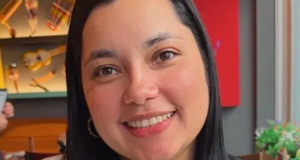Last week, when Boris Nemtsov was shot dead as he walked across a bridge next to the Kremlin, it took 11 minutes before a police car arrived at the scene, according to the time stamp on closed circuit television footage.
From the moment the 55-year-old former deputy prime minister was shot late last Friday night, associates of the Kremlin critic have been asking why the police took so long to get there, and how, in such a heavily monitored location, someone could fire six shots at him and get away.
Nemtsov was the most high profile opposition figure killed during President Vladimir Putin's 15-year rule. His shooting prompted accusations from Putin opponents, and Western states, that democratic freedoms in Russia were under attack.
Russian officials have denied any involvement in Nemtsov's killing. Russian President Vladimir Putin called it a shameful tragedy, and demanded a thorough investigation.
Accounts gathered by Reuters from opposition activists and Nemtsov's friends raise questions about state security agencies' actions in the minutes before and after the attack on Nemtsov.
Those sources say they believe Russian security agencies, which run close surveillance on many prominent opposition figures, especially in the run-up to a protest, were monitoring Nemtsov, who was organizing a rally due to take place two days after his death.
That surveillance, they said, included the tapping of phone conversations and security agents at times physically tailing opposition figures. They said they knew of the practice because in the past their telephone conversations had been posted on the Internet.
In addition, people with experience of trying to stage protests close to the Kremlin said the area is under 24 hour monitoring from closed circuit cameras and a heavy concentration of police and security service agents, making it one of the most tightly protected places in Russia.
It was not possible to independently establish whether Nemtsov was under surveillance at the time of his killing, or that the area was being monitored by state security. It is possible surveillance data has been passed to investigators, but not made public.
Reuters sent detailed questions about the circumstances of the killing to the Investigative Committee, the state body leading the investigation, and to the Federal Security Service (FSB), the main state security agency. They did not respond.
The issue of surveillance may be crucial to understanding who could have killed Nemtsov, say his friends.
Given the level of security normally in place, the killing could only have been done by trained killers acting with the possible involvement or acquiescence of some part of the security services, say several of Nemtsov's associates.
That would make less likely some of the lines of inquiry that investigators and officials have mentioned in recent state media reports: that the killing was over Nemtsov's business dealings or personal life, or committed by extremists acting on their own initiative.
EAVESDROPPING
Some of Nemtsov's friends said their experience showed he must have been under surveillance.
Lev Ponomaryov, an opposition activist and Nemtsov ally recalled how he had arranged by phone to meet Michael McFaul, the former U.S. ambassador to Russia on March 29, 2012. When McFaul reached the venue, a television crew from Kremlin-controlled television station NTV was waiting for him, Ponomaryov said.
McFaul tweeted on that date: "Everywhere I go NTV is there. Wonder who gives them my calendar? They wouldn't tell me."
Ilya Yashin, the co-chairman of Nemtsov's party, said when he arrived at a restaurant for a meeting with a foreign diplomat, the manager came up to him and warned him that state security agents had been there two hours earlier to install listening devices. Reuters was not able to independently verify this account or the details of the meeting.
Nemtsov was subject to the same treatment, said Olga Shorina, his closest aide. "Three days before a march, they always did that. They always monitored."
Said Vladimir Ryzhkov, a veteran opposition leader who worked with Nemtsov: "How else do they know about all our movements?"
Shorina added that a prosecution case against dozens of opposition activists including well-known opposition figure Maria Baranova, over a May 6, 2012 protest, contained evidence about planning for the rally that could only have come from organizers being tailed. Reuters has not seen the documents.
Against this backdrop, some of Nemtsov's associates say they are bemused as to how he could be shot dead without state security agencies being immediately aware.
Individual surveillance, layered on top of the security permanently in place around the Kremlin, would have made an attack like the one on Nemtsov difficult to pull off, say his friends. And, after he was shot, police or another state security agency should have appeared on the scene much sooner, the friends said.
In 2013, one of Nemtsov's fellow opposition activists, Sergei Sharov-Dalaunay, tried, with one other person, to stage an impromptu picket on Red Square, a few hundred yards from the spot where Nemtsov was killed. In contrast to the 11 minutes it took police to arrive on the night Nemtsov was shot, Sharov-Dalaunay said it took police only seconds to grab him from the moment he unfurled a banner.




